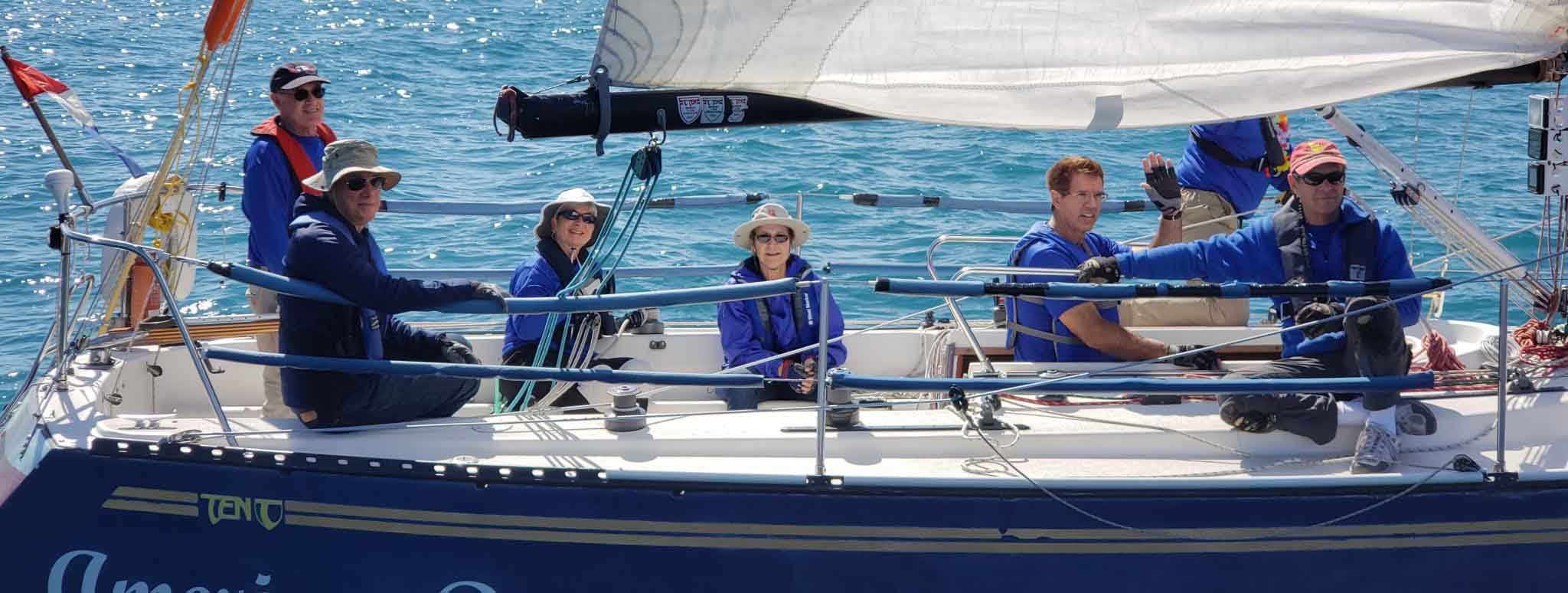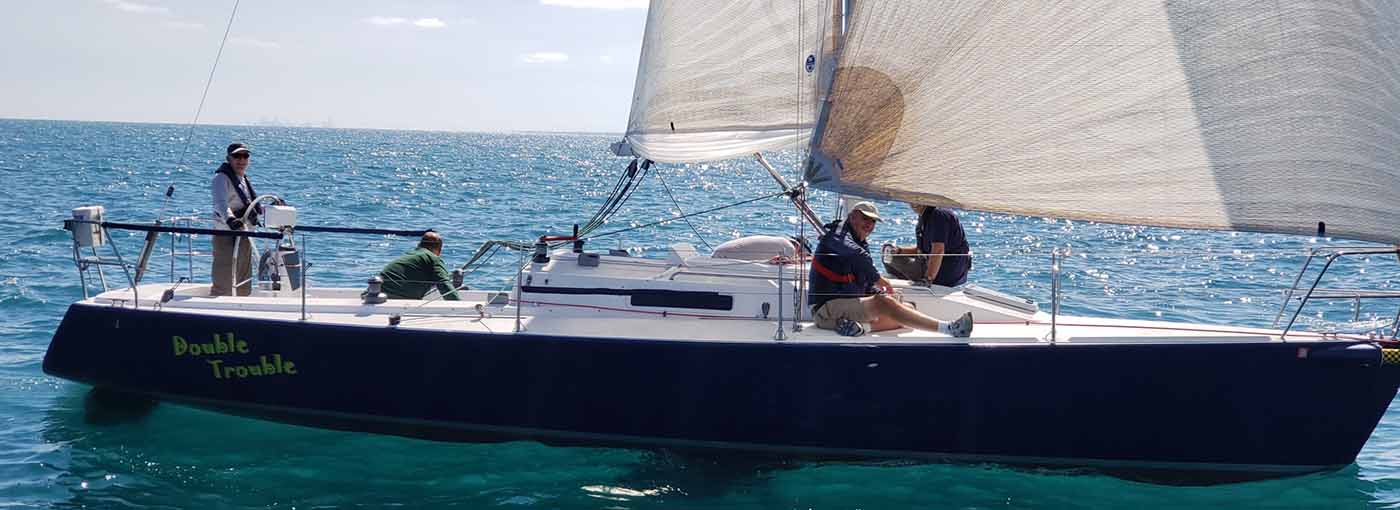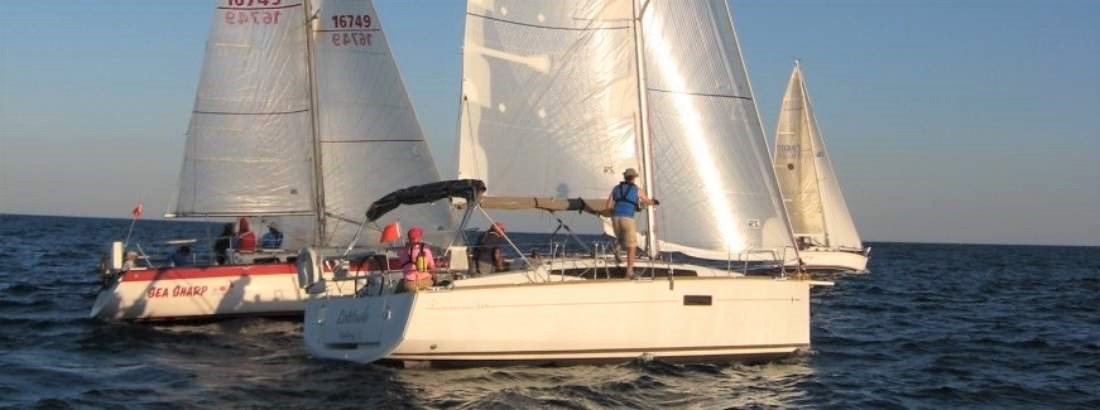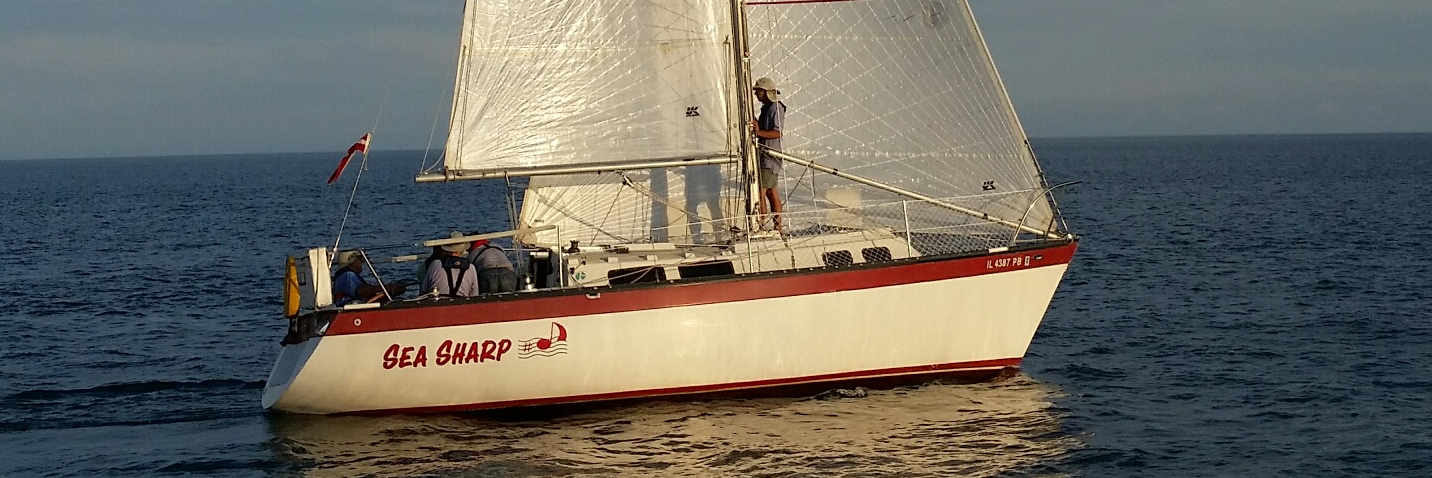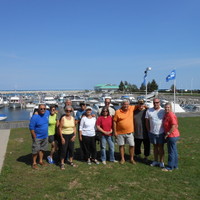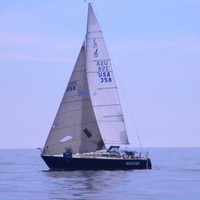A tale from my docking diary.
Anyone that has ever piloted a sailboat knows how challenging it can be to maneuver one at low speeds in tight places. Even after decades of owning boats from 17 to 32 feet, trailer sailors to medium size cruising vessels, getting away from and back to the dock is quite often the most stress producing aspect of any outing. Cross winds, strong currents and inexperienced passengers or crew can combine to wreak havoc on the best laid docking or departure plan. The vision the skipper has in their mind of a smoothly orchestrated exit or arrival is soon lost in the chaos of shouted instructions, errantly tossed lines, individuals leaping across yawning expanses of open water to precariously narrow decks or dock fingers followed by the grinding crunch of hull & dock, ouch.
This past summer I had the opportunity to spend a couple of months transiting between locations on the southern portion of Lake Michigan. During that time I began to notice another variable in the docking dance. It is the inadvertent, although well intentioned, confusion caused by people onshore, often other boaters, offering assistance to vessels attempting to dock. On most occasions I welcome the offer to take a dock line, but sometimes the "help” can lead to confusion and a disorganized attempt to get a vessel secured.
Case in point: I was headed in to the New Buffalo municipal transit dock on the Galien River in southwest Michigan after a day sail with two good friends. The dock had its peculiarities that required a little more attention when approaching. It was a series of fixed piers that were, due to low water, 4 feet higher than the deck of my Bristol 32. There was a fixed piling, for a stern tie, separating parallel bays, each had a narrow aluminum dock finger to port or starboard. Each finger had two evenly spaced vertical metal posts extending 4 feet above the dock, but whose lower end hung exposed at the height of my boats deck. The wood bumper strips on these posts were splintered and broken and the potential of it grinding against my deck and hull was something I wanted to avoid. I was returning to the same slip, so I had laid out my spring lines and left them secured and in place on the dock, (out of anyone’s way). I knew where the fenders needed to be to protect my hull from the suspended posts and had a bow and stern line coiled on deck, ready to deploy once we were alongside. I also had two more spare lines coiled on deck just in case, one in the cockpit and one on the cabin top forward. Simple right? I explained to my friends that all I needed them to do was to stand on deck, one forward of the shrouds, one a few feet aft and simply grasp the vertical posts as I brought the boat to a complete stop alongside. It was not possible for anyone to get quickly up on the dock due to the difference in height, but I could secure both the bow and stern line from my deck while they kept us off the dock, then climb up the ladder and secure the spring lines. It would take no more than 90 seconds.
As we approached and entered the slip, a cross wind was nudging us to port, we were on a starboard tie. It was not a strong breeze, but enough to make it interesting. Enter the crew from the adjacent vessel, running on to the dock, shouting instructions to my crew, My friend Melanie was forward, Robert was aft, neither being very experienced at docking and not realizing how critical in this circumstance it was to stay with the plan. Someone shouted at Melanie to throw them the bow line, she let go of the post and threw them the coiled line from the cabin top. It was a spare and not secured to the boat, the bow now swung away from the dock toward an adjacent vessel. Someone else handed Steve one of the spring lines which he attempted to secure to a cleat on the toe rail amidships, he let go of his post and now the stern swung away. I fended the port side off the center piling and managed to get a stern line to someone on the pier, they heaved and the bow, pivoted by the wind, swung more quickly to port. Melanie had managed to get a line to someone on the sea wall forward of the bow, and as they heaved, we shot forward, my anchor scraping into the concrete abutment. The line forward was wrapped around my roller furler and over the top of the bow pulpit. We were now too far forward and as they pulled us back to the dock the bare metal posts ground into my hull. "Thanks guys, I think we've got it from here, I really appreciate your help” I said as I could feel my face flush with equal parts of embarrassment and frustration. There was no serious damage to the boat, just a bruised ego and that disappointing feeling of not executing what should have been a relatively routine maneuver.
The more I sail, the more I learn. Here is what I gained — as a skipper I must be exceedingly clear with my crew as to their role and responsibilities, especially those with limited experience. I will also be clear to anyone offering assistance dockside as to how they can assist without accidentally causing confusion. I will also be aware when I am the one offering help, asking myself, does the skipper really need assistance? If so then I will ask in very clear terms what exactly they want me to do, sometimes it may be nothing more than observe and complement their seamanship when they are successfully alongside.
G. Wallace Bristol 32 Blue Mist



